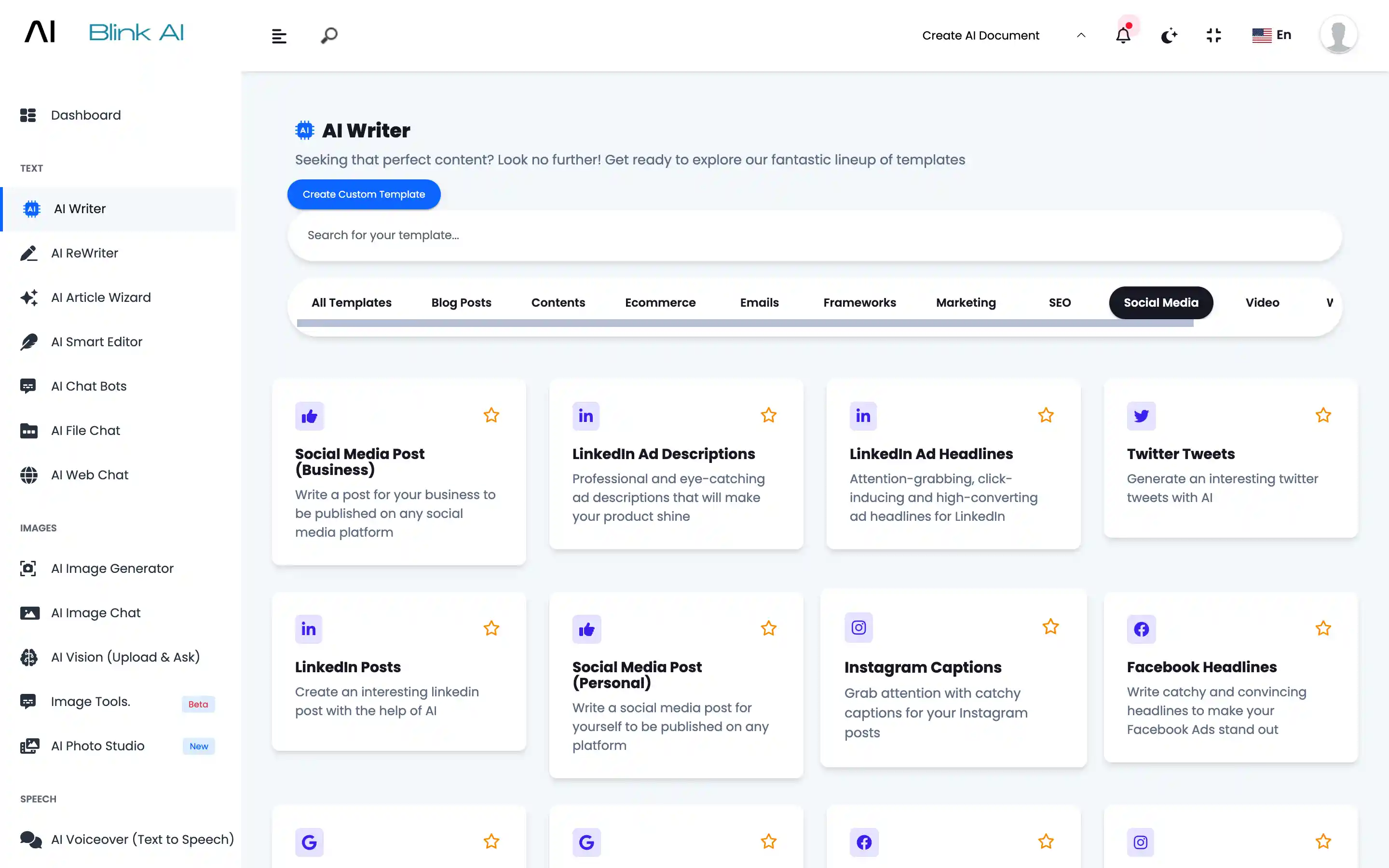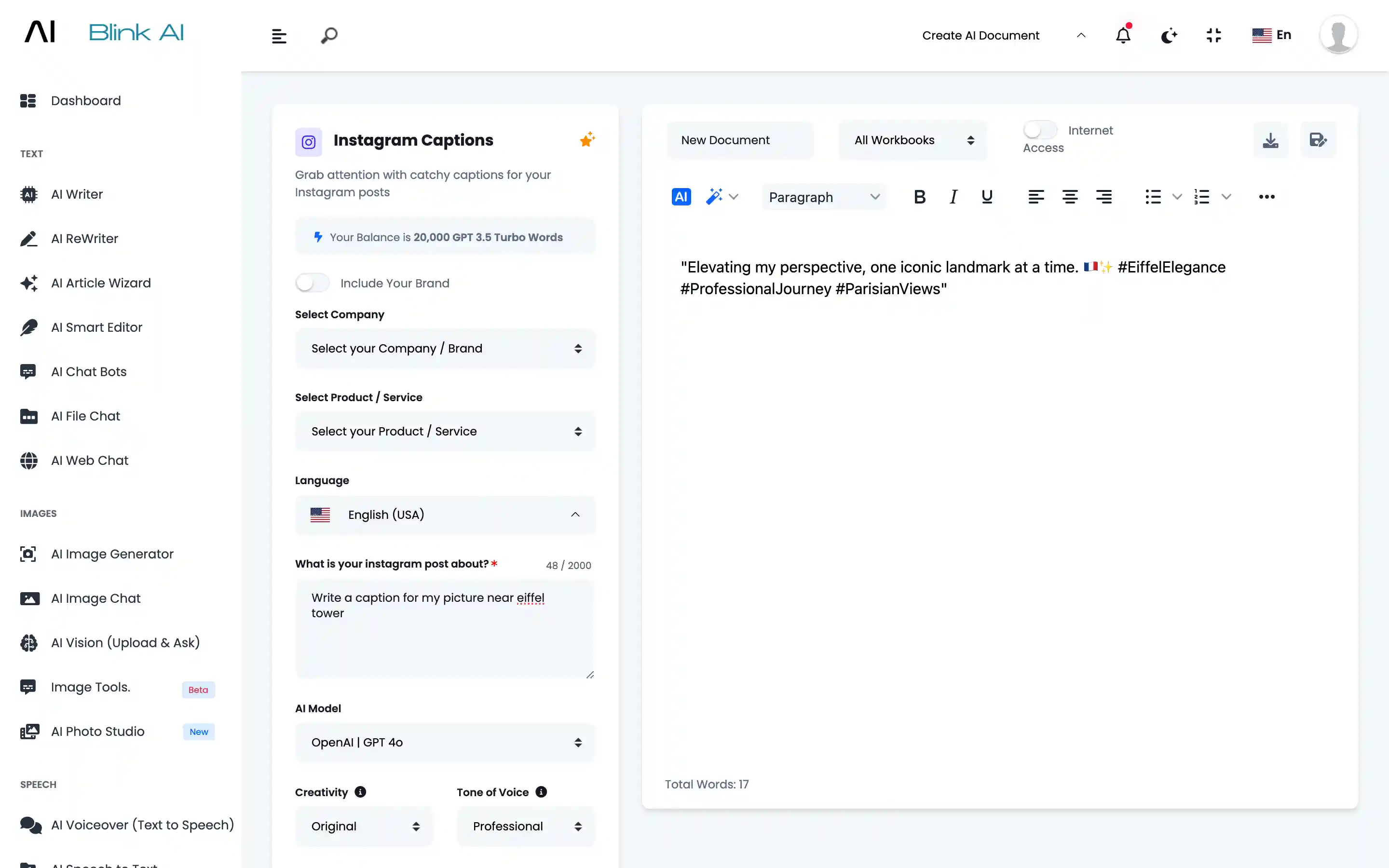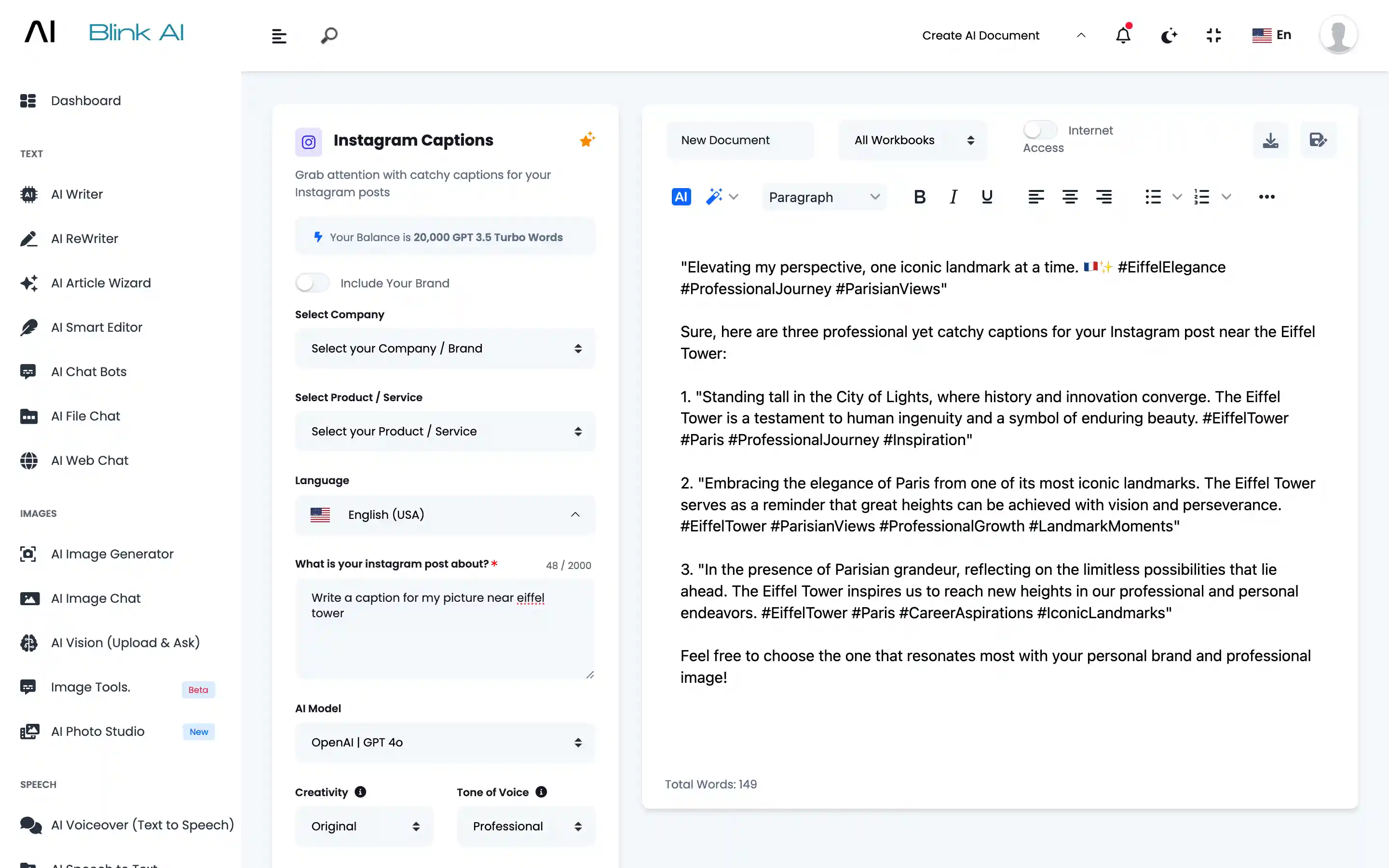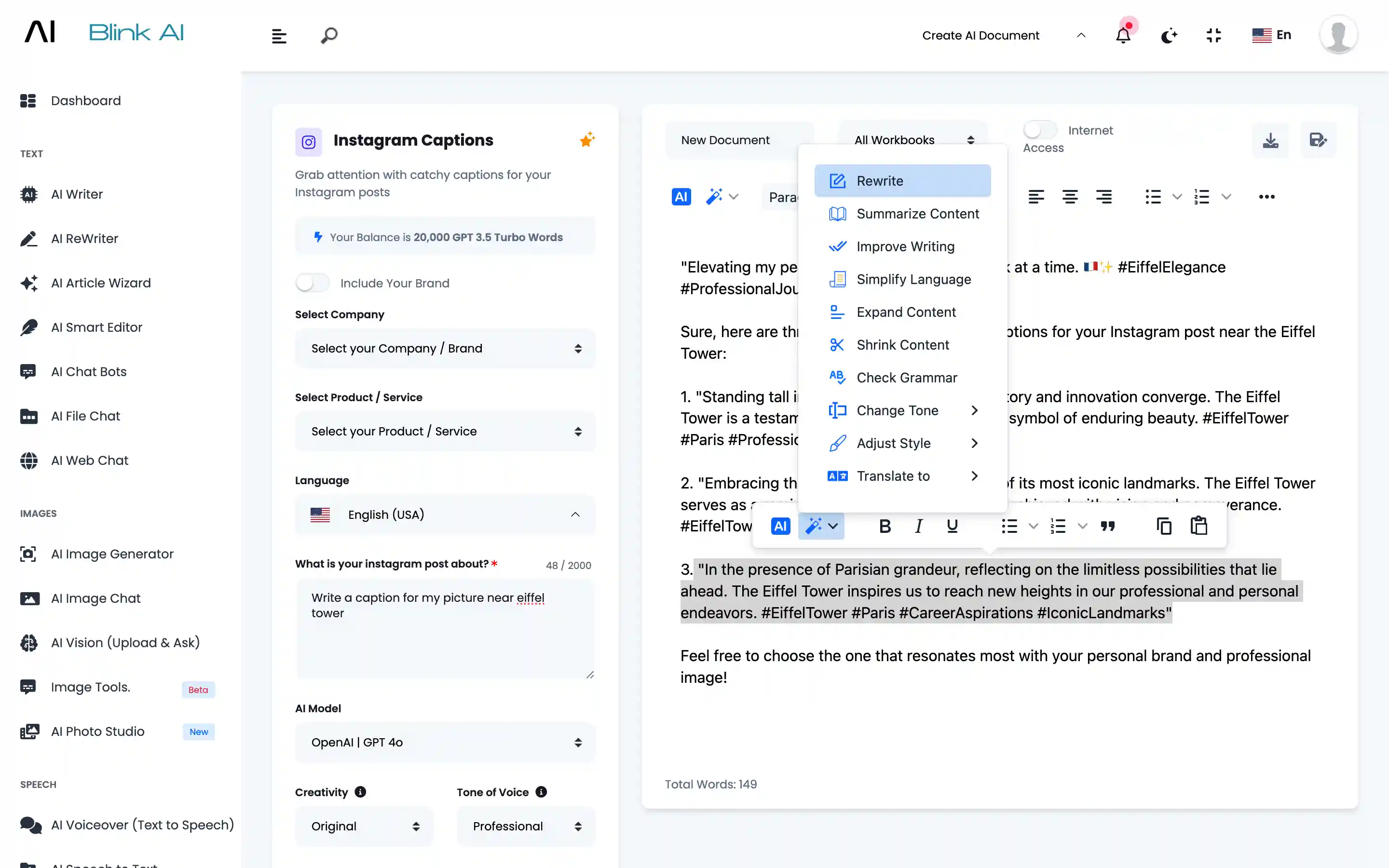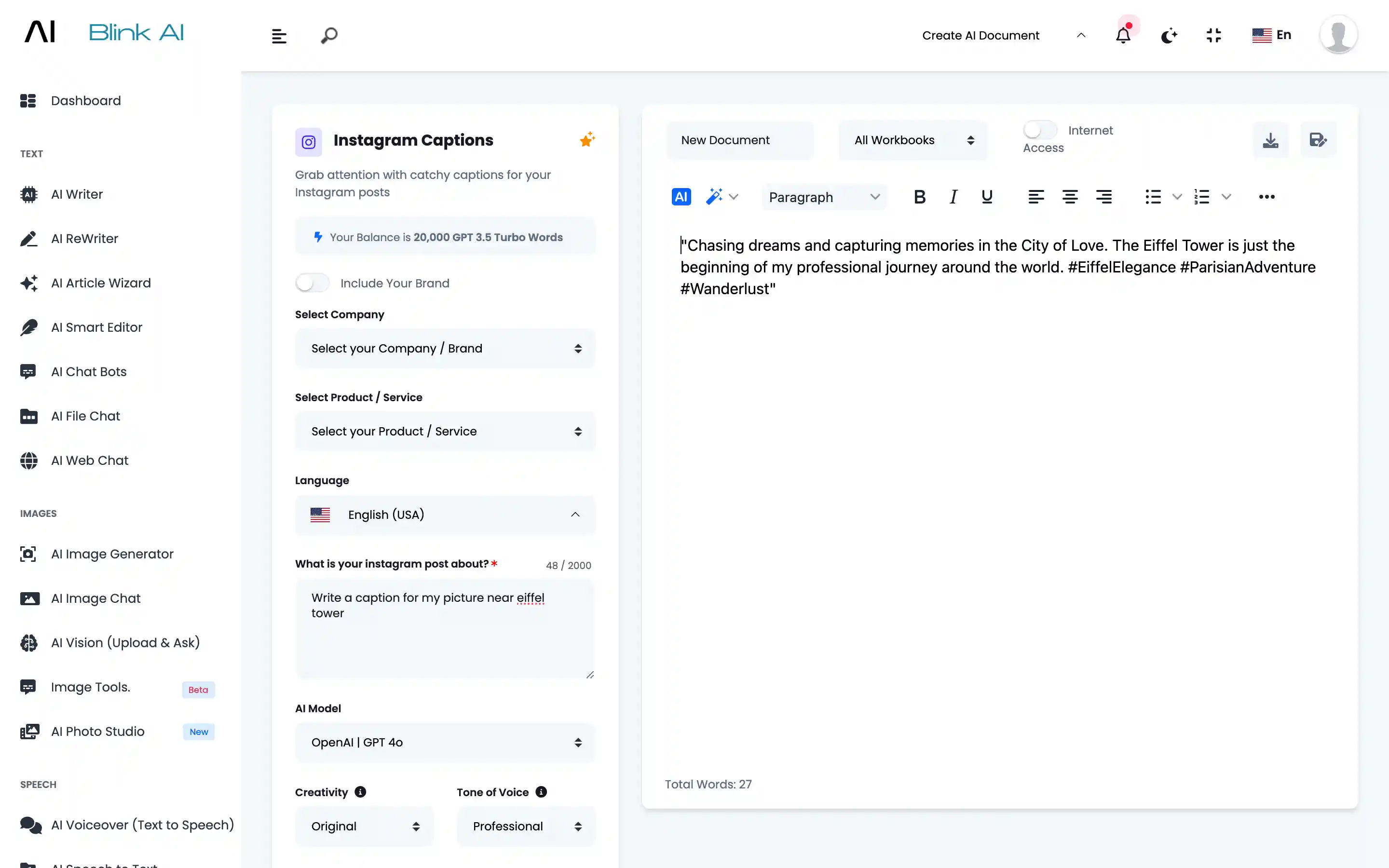Meet, BlinkAI – AI Content Generator: Text, Image, Video, Voice & Code
Google Ads Description
One platform to generate all AI contents





AI Google Ads Description
Write a Google Ads description that makes your ad stand out and generates leads
Blink AI's Google Ads Description
About Google Ads Description
Writing compelling Google Ads descriptions is crucial for capturing the attention of potential customers and encouraging them to click on your ad. A well-crafted ad description not only attracts clicks but also increases the likelihood of converting those clicks into leads or sales. Here’s a guide on how to write a Google Ads description that stands out and generates leads effectively: Action-Oriented: Incorporate actionable verbs to prompt users to take specific actions. Examples include "Shop now," "Learn more," "Request a quote," or "Sign up." Emphasize Benefits: Focus on how your product or service will improve the customer’s life or business. Clearly communicate the value they will receive by choosing your offering. Clarity: Ensure your ad description is straightforward and easy to understand at a glance. Avoid jargon or complex language that may confuse or deter potential customers. Brevity: Google Ads have character limits, so make every word count. Focus on conveying essential information and compelling reasons to click on your ad. Testimonials or Reviews: If applicable, include snippets of customer testimonials or positive reviews to build credibility and trust. Trust Badges: Display trust badges such as awards, certifications, or guarantees to reassure potential customers of your reliability and quality. "Discover the ultimate solution for [customer pain point]. Transform your [industry] strategy with our cutting-edge [product/service]. Don’t miss out—explore our exclusive offer today! #IndustryLeader #Innovation" Writing a Google Ads description that stands out and generates leads requires strategic thinking, audience understanding, and compelling messaging. By following these tips and best practices, you can create ad descriptions that capture attention, communicate value, and motivate potential customers to take action. Continuously test and optimize your ad copy to maximize performance and achieve your advertising objectives effectively on Google Ads.How to Write a Google Ads Description that Makes Your Ad Stand Out and Generates Leads
1. Understand Your Audience
2. Highlight Unique Selling Proposition (USP)
3. Use Compelling Language and Messaging
4. Include Relevant Keywords
5. Be Clear and Concise
6. Address Pain Points or Challenges
7. Incorporate Social Proof or Trust Signals
8. Create a Sense of Urgency or Scarcity
9. Tailor for Different Ad Extensions
10. Test and Optimize Continuously
Example of a Compelling Google Ads Description:
Conclusion
Steps for AI Writing
Start Writing Content in 3 Easy Steps
1
Step 1
AI Writer Section
Go to AI Writer section and select a template
2
Step 2
Details
Provide brief details about your requirement
3
Step 3
Generate
Generate, amend and save content
Discover AI Writer
How To Use Blink AI's AI Writer for Content Creation
Go to AI Writer Section
Choose from 70+ AI Writing Templates or Create your Own Template
Describe
You can provide details like what is the exact requirement. How many outputs you want. Which AI model you want to use.
Generate
Content will be generated based on your input.
Amend
Select the content you want to amend. Click on the Magic Wand to amend Generated Content.
Fresh Output
Fresh output will be generated. You can save it in Workbooks.
